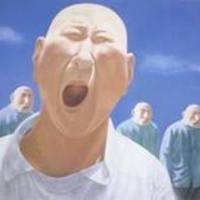Thomas Radice
Southern Connecticut State University, History, Faculty Member
- Early China, Early Chinese History, Early Chinese Philosophy, Early Chinese texts, Warring States (Chinese) Thought, Chinese Philosophy, and 19 moreChinese Political Thought, Chinese Religions, Confucianism, Daoism, Mohism, Filial Piety, Ritual, Ritual Studies, Ritual Theory, Performance Studies, Performance, Philosophy of Theatre, Theatricality, Philosophy of Dance and Theatre Arts, Performance Philosophy, Verbatim Theatre, Philosophy of performance, Chinese Theatre, and Performance and Religionedit
This essay analyzes the early Chinese elite discourse on filial death rituals, arguing that early Chinese texts depict these rituals as performance events. Building on spectacle of xiao sacrifices in the Western Zhou Dynasty, authors in... more
This essay analyzes the early Chinese elite discourse on filial death rituals, arguing that early Chinese texts depict these rituals as performance events. Building on spectacle of xiao sacrifices in the Western Zhou Dynasty, authors in the Warring States Period and Han Dynasty conceived of filial rituals for the dead as dramaturgical phenomena that underscored not only what needed to be performed, but also how it should be performed, and led to an important distinction between personal dispositions and inherited ritual protocol. This distinction, then, led to concerns about artifice in human behavior, both inside and outside the Ruist (Confucian) tradition. By end of the Warring States Period and in the early Western Han Dynasty, with the embracement of artifice in self-cultivation, the dramatic role of the filial son in death rituals became even more developed and complex, requiring the role of cultivated spectators to be engaged critics who recognized the nuances of cultivated performances.
Research Interests:
Research Interests:
Li 禮 (translated variously as " ritual " , " etiquette " , or " propriety ") plays a central role in early Confucianism, but its complexity is not always fully understood. At first glance, it may seem as if li behaviors are merely... more
Li 禮 (translated variously as " ritual " , " etiquette " , or " propriety ") plays a central role in early Confucianism, but its complexity is not always fully understood. At first glance, it may seem as if li behaviors are merely attempts to promote conservative practices from the idealized Chinese past. However , by examining the nature and function of li, as described the Analects (Lunyu 論語) and the Xunzi 荀 子 (two key texts in the early Confucian tradition), it becomes overwhelmingly apparent that li is a much more complicated phenomenon. Li actually plays key roles within the interconnected fields of Confucian ethics, religion, and politics and often adds aesthetic elements to these areas of thought. As such, it is as much a source of Confucian innovation as it is a tool for promoting reverence for the past.
Research Interests:
In response to challenges to ritual practice, Xunzi develops not only a theory of ritual, but also a method of ritual performance that can be illuminated by a comparison to modern Western acting techniques. His method also reveals a... more
In response to challenges to ritual practice, Xunzi develops not only a theory of ritual, but also a method of ritual performance that can be illuminated by a comparison to modern Western acting techniques. His method also reveals a “tragic” aesthetic, through which he attempts to reconcile the diversity of beliefs about death within a single practice.
Research Interests:
Research Interests:
Annotated bibliography of research materials on Mencius (Mengzi 孟子).
Official version is an HTML document at www.oxfordbibliographies.com (Chinese Studies)
Official version is an HTML document at www.oxfordbibliographies.com (Chinese Studies)
